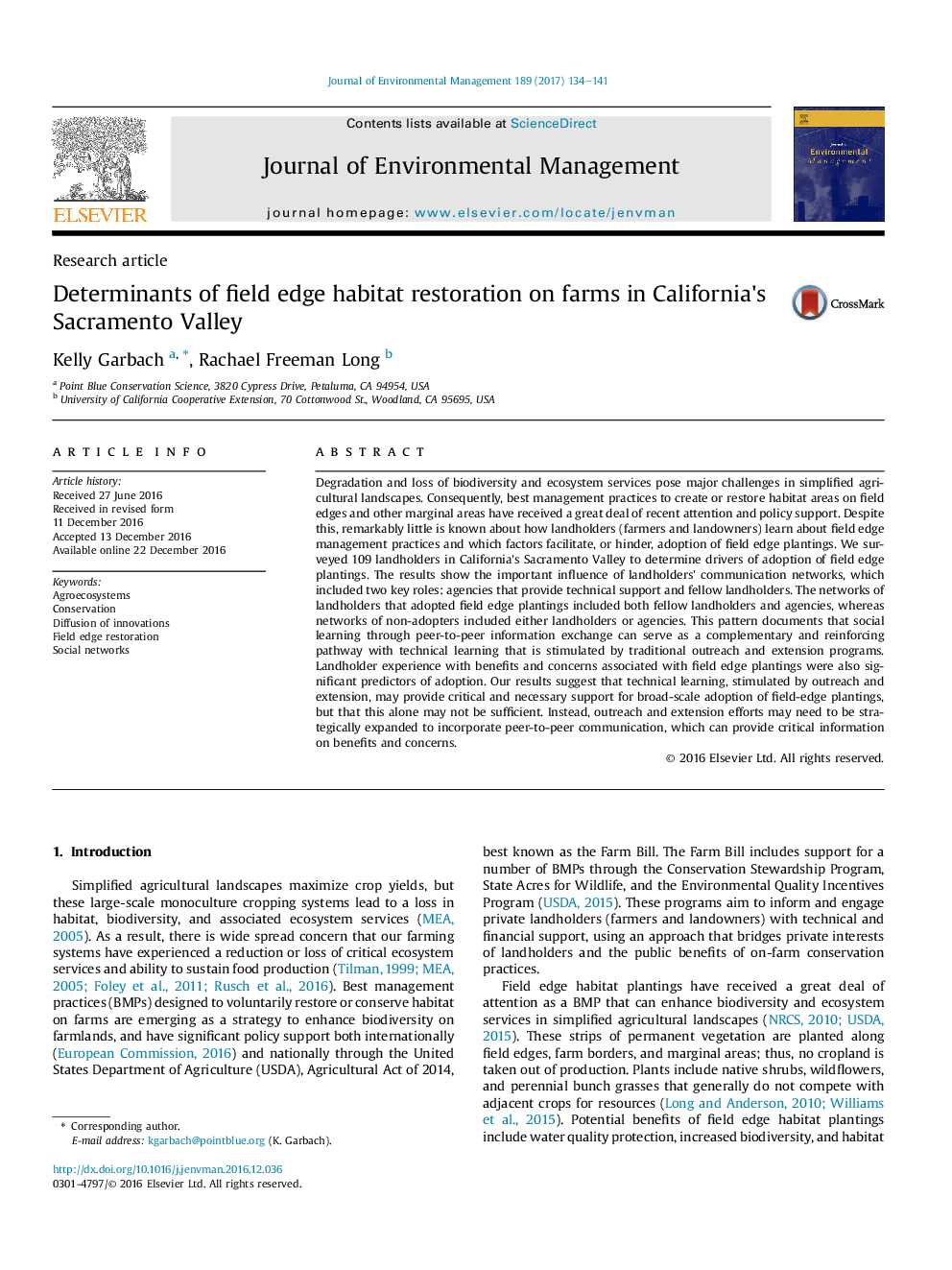| Article ID | Journal | Published Year | Pages | File Type |
|---|---|---|---|---|
| 5117071 | Journal of Environmental Management | 2017 | 8 Pages |
â¢Field edge plantings are a best management practice that has received much recent attention.â¢Yet, little is known about factors that support or hinder their adoption by landholders.â¢We surveyed 109 landholders in California's Sacramento Valley, a prime agricultural region.â¢Landholder communication networks had a significant influence on patterns of adoption.â¢Networks of adopters included communication with landholders and conservation agencies.
Degradation and loss of biodiversity and ecosystem services pose major challenges in simplified agricultural landscapes. Consequently, best management practices to create or restore habitat areas on field edges and other marginal areas have received a great deal of recent attention and policy support. Despite this, remarkably little is known about how landholders (farmers and landowners) learn about field edge management practices and which factors facilitate, or hinder, adoption of field edge plantings. We surveyed 109 landholders in California's Sacramento Valley to determine drivers of adoption of field edge plantings. The results show the important influence of landholders' communication networks, which included two key roles: agencies that provide technical support and fellow landholders. The networks of landholders that adopted field edge plantings included both fellow landholders and agencies, whereas networks of non-adopters included either landholders or agencies. This pattern documents that social learning through peer-to-peer information exchange can serve as a complementary and reinforcing pathway with technical learning that is stimulated by traditional outreach and extension programs. Landholder experience with benefits and concerns associated with field edge plantings were also significant predictors of adoption. Our results suggest that technical learning, stimulated by outreach and extension, may provide critical and necessary support for broad-scale adoption of field-edge plantings, but that this alone may not be sufficient. Instead, outreach and extension efforts may need to be strategically expanded to incorporate peer-to-peer communication, which can provide critical information on benefits and concerns.
